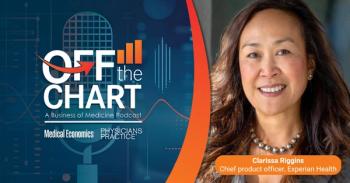
RPM unleashes the power of tracking blood pressure control, enhancing value-based care and transforming patient outcomes
Key Takeaways
- Hypertension control is vital for preventing adverse outcomes, with RPM and value-based care models transforming management strategies.
- Remote patient monitoring technologies enable continuous monitoring, improving patient engagement and health outcomes.
The advent of telehealth and remote patient monitoring has created an opportunity to reassess how blood pressure control is measured and managed.
Hypertension control is very personal for me. Yet discussing health outcomes in terms of quality metrics and value-based measures can start to feel quite impersonal. We should remember that each of the individuals that make up those populations being measured may be deeply affected by their individual metrics and the related outcomes. When I was 10, my grandmother had a stroke while babysitting me. I was scurried to another room while EMS tended to her and took her to the hospital. She would have multiple strokes in the years that followed, all due to poorly controlled
Three years ago my mother passed away from complications of Alzheimer’s disease. Her neurologist, a former attending and mentor of mine, called me to review her brain autopsy results. I asked him what I could do to avoid this terrible, debilitating disease that places such a heavy burden on patients and their families. His response: Control your blood pressure and lipids over the next three to four decades.
On autopsy, my mom had the neurofibrillary tangles and plaques typical of Alzheimer’s, but she also had severe arteriosclerotic changes, likely due to suboptimal blood pressure and lipid control in the preceding decades. The challenge is that she was otherwise very healthy, active and physically fit by every measure, but the mildly elevated blood pressure and low-density lipoprotein was something she did not take seriously or treat aggressively. That is one example of why blood pressure is weighted so heavily as a measure of quality health care — because the effects of poorly controlled blood pressure are not only acute but also chronic and insidious in their impact on our vital organs such as the brain, kidneys and heart.
In the realm of quality measurement incentives, like the
RPM has seen remarkable growth, and payers supporting value-based care approaches have quickly adapted, acknowledging the validity, and even advantages, of home readings in assessing blood pressure control. Had my mom or my grandmother been monitored at home day after day, I believe that it is more likely they would have taken their elevated blood pressure more seriously and their health care providers would have treated it more aggressively.
Accurate blood pressure control data supports proactive care approach
Numerous studies have cemented the
Reliable remote monitoring technologies now allow practitioners to keep a finger on the pulse of their patients’ health from a distance. Pairing these innovations with a patient-centric care approach ensures that blood pressure control metrics reflect each patient’s unique health journey. An integration of technology with tailored care plans and patient engagement can lead to more sustained improvements in blood pressure control and, consequently, in overall health outcomes.
Alternative payment models incentivize health care providers to not only maintain but actively enhance their patients’ blood pressure control through risk-sharing and financial incentivization. This shift in emphasis toward proactive care rather than reactive treatment showcases the importance of this metric as a preemptive measure of effective patient management and value-based performance. Providers generally report these quality measures from their electronic health record (EHR) software.
The importance of data accuracy and integrity as it feeds into EHRs cannot be overstated in a value-based care environment, as it is critical to reliable patient assessments and directly influences reimbursement and performance scores. In these instances, reliable home monitoring devices that integrate seamlessly with EHRs ensure secure transmissions and offer providers the most accurate, comprehensive picture of blood pressure control.
Integrated remote monitoring technology benefits patients, empowers providers
Real-world examples spotlight what is achievable when blood pressure control takes a central place in value-based health care practices. A Mass General Brigham study evaluated how an
As payers and providers continue their quests for more precise, comprehensive health metrics, blood pressure control — and its successful integration into value-based care using RPM — reflects the future of the health system. It’s no longer about just keeping tabs on numbers but understanding how those numbers relate to a patient’s daily life and the quality of care they receive from providers. It’s essential to strike the perfect balance between effective, accurate measurement and meaningful outcomes.
Health care organizations that recognize the full impact of blood pressure control on value-based performance and patient wellness can transform this vital sign into the pivotal metric it truly is. A reimagined focus on blood pressure control not only strengthens the patient-provider relationship but also catalyzes a new era in health care where valuable insights emerge from the daily rhythms of life, as seen through the lens of a controlled, healthy heart. And let us not forget that those population quality measures all start with an individual, their health, and those who love them and want to see them live a long, healthy life.
Newsletter
Stay informed and empowered with Medical Economics enewsletter, delivering expert insights, financial strategies, practice management tips and technology trends — tailored for today’s physicians.


















